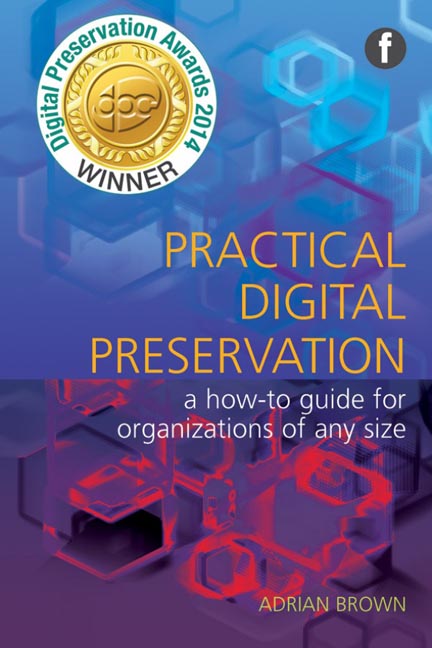Book contents
- Frontmatter
- Contents
- Acknowledgements
- Glossary
- 1 Introduction
- 2 Making the case for digital preservation
- 3 Understanding your requirements
- 4 Models for implementing a digital preservation service
- 5 Selecting and acquiring digital objects
- 6 Accessioning and ingesting digital objects
- 7 Describing digital objects
- 8 Preserving digital objects
- 9 Providing access to users
- 10 Future trends
- Appendices
- Bibliography
- Index
9 - Providing access to users
Published online by Cambridge University Press: 08 June 2018
- Frontmatter
- Contents
- Acknowledgements
- Glossary
- 1 Introduction
- 2 Making the case for digital preservation
- 3 Understanding your requirements
- 4 Models for implementing a digital preservation service
- 5 Selecting and acquiring digital objects
- 6 Accessioning and ingesting digital objects
- 7 Describing digital objects
- 8 Preserving digital objects
- 9 Providing access to users
- 10 Future trends
- Appendices
- Bibliography
- Index
Summary
Introduction
Access provides the very raison d’être for digital preservation: what we are seeking to preserve is a viable means of access to digital objects, now and into the future. Everything we do in this regard must therefore be informed by the needs of current and future users: their requirements should dictate how we go about the business of digital preservation. While the preceding chapters have considered how to maintain a digital object's potential for access, this chapter looks at the realities of actually providing access to users today. However, while approaches to providing access to digital objects should be driven by an understanding of what users need, they must inevitably be tempered by the constraints of practicality, legality and curatorial responsibility.
This chapter discusses some of the issues that you need to consider when presenting preserved digital records to users. These include the practical, technical and legal challenges involved in providing access online and within a search room environment.
What do we mean by access?
Access means many things to many people: for some it may simply entail the ability to view something onscreen, for another to download a file, for a third to extract the content in format suitable for reuse elsewhere. Some users expect extensive documentation and step-by-step guidance, others are happy with minimal information or assistance. It is essential for every repository to consider what forms of access it wishes to provide for its user community, taking account of the capabilities of the former, and the expectations of the latter.
Fundamentally, access requires users to be able to do three things:
• Find things of interest: Resource discovery encompasses a range of techniques for searching and browsing the content of the repository.
• Understand the options for accessing a given digital object: It is not necessary that every digital object be available to every user, nor for objects to be available through any particular mechanism – such as the web – but it is essential that a user be able to understand whether or not access is possible and, if so, how. Availability pertains to what is technically possible, and any conditions of use that apply either to the repository in general, or specific digital objects in particular. These may include restrictions relating to copyright, confidentiality or citation, for example.
• Access the object.
Information
- Type
- Chapter
- Information
- Practical Digital PreservationA how-to guide for organizations of any size, pp. 243 - 272Publisher: FacetPrint publication year: 2013
